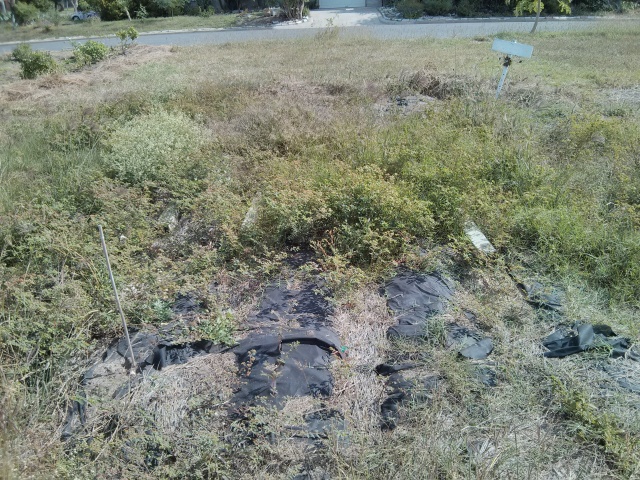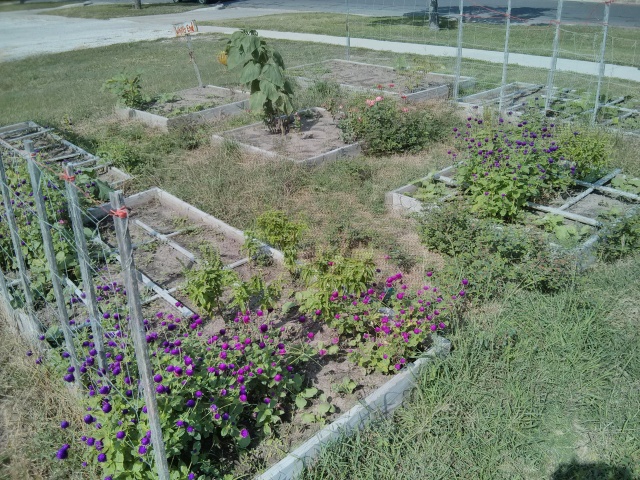While working in my community garden plot on a beautiful day last weekend, I took a break from my own patch to peak into the minds and agricultural history of my garden neighbors. No one else was around, so here is the rest of the secrets their gardens whispered to me on a warm, sleepy afternoon.
3. “Little Big Ag”
This plot is what remains of a once flourishing and highly productive commercial venture among the other gardens. In the spring and early summer, the owner grew a market garden with different hot peppers, tomatoes, cilantro and some sweet peppers. The plot was tilled up to disrupt the root zone of any current plants and then formed into rows of raised beds before being covered with thick fabric that acts as an artificial mulch to prevent the germination of weeds.
These strategies are very common in very large scale agriculture and represent, in my opinion, a lack of respect and understanding for the cycling of nutrients into the soil and the fungal and bacterial microorganisms that make dirt into soil. Although this gardener definitely got his crop, you can see from the photo above that the system was not even slightly permanent, meaning that every year, rather than building on the intensive amount of time and effort required to get a good yield, this gardener has to start completely over, scorched earth style.
And Number 4: ” Garden² ” (pronounced “Garden Squared” (see what I did there?)
This plot, although somewhat neglected tells me a lot of fun things about the responsible gardener that installed this system.
The system put to use here is called the Square Foot Gardening by Mel Bartholomew. The system is an intensive vegetable gardening strategy that is great for teaching gardening as well as for gardeners of all ages that want to grow lots of vegetables with very low, pleasant input.
The typical bed is actually between 3×3 or 4×4 feet across, as you can see in the middle beds. The reasoning behind that is the narrow beds allow you to easily reach all the way into the bed without crawling around, but also without compressing your delicate soil by walking on it. The gridding of the different beds allows for easy, intuitive plant spacing that can be repeated consistently. The geometries that result from your plants sprouting in a grid make knowing weed from food easy since you know where to look for sprouts. The high plant density also means that you don’t have to water as much land to support the same amount of plant mass. The same is true with soil amendments like compost and bone meal, this system lets you keep your attention highly focused.
I first learned about the square foot method while I was teaching gardening in the Peace Corps and have been a fan of it since. If you have the time and the desire, this system is really very hard to beat for incredibly high production from a surprisingly small plot of land.
Ironic as it is, the gardener in charge here seemed eager to do the hard work to design and install the sleek, efficient garden, but then wasn’t up for the occasional maintenance that the garden required. This is like someone that insists on push starting their car but then walks to their destination, or just gets the car running and then lets it run off a cliff.
All right, enough finger pointing, next in this series, I’ll update everyone on what’s finally happening in my little permaculture plot hidden in amongst the Ghosts of Agricultures Past, Present and Future!
Until then,
Keep Growing!
E



